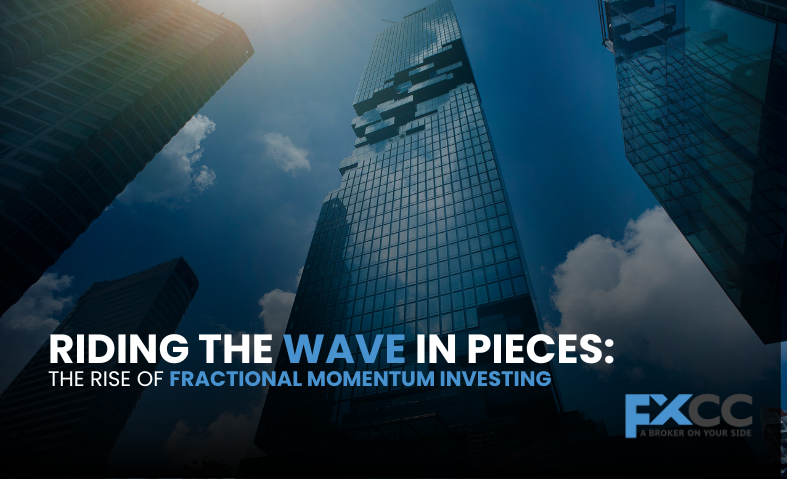The relentless pursuit of superior returns has long been the driving force behind innovation in the investment landscape. From the advent of index funds to the sophisticated strategies of quantitative finance, investors are constantly seeking novel ways to capture market inefficiencies and enhance portfolio performance. One such emerging approach, gaining traction among both seasoned professionals and astute individual investors, is fractional momentum investing. This nuanced strategy builds upon the well-established principles of momentum investing but introduces a layer of granularity that aims to refine risk management and potentially unlock more consistent gains.

Understanding the Core of Momentum
Before delving into the fractional iteration, it’s crucial to grasp the fundamental concept of momentum investing. The core principle of momentum investing lies in the empirical finding that assets demonstrating strong recent gains often maintain their upward trajectory in the near to intermediate future, while those with poor recent performance tend to continue their downward trend. This “trend-following” approach capitalizes on behavioral biases such as herding and anchoring, where investors tend to follow prevailing trends and are often slow to adjust their beliefs in the face of new information. Traditional momentum strategies typically involve identifying a universe of assets (stocks, bonds, commodities, etc.), ranking them based on their past returns over a specific look back period (e.g., 3, 6, or 12 months), and then constructing a portfolio by holding the top-performing assets and potentially shorting the bottom-performing ones.
The Limitations of Traditional Momentum
While the historical evidence supporting the efficacy of momentum investing is compelling, traditional implementations are not without their limitations. One significant drawback is the potential for high turnover. As the top and bottom performers change, portfolios need to be rebalanced frequently, leading to increased transaction costs and potential tax implications. Furthermore, traditional momentum strategies can be susceptible to “crashes” – sudden and sharp reversals in market trends that can inflict significant losses on concentrated momentum portfolios. These crashes often occur when the factors driving past performance abruptly cease or when broader market sentiment shifts dramatically. Another challenge lies in the binary nature of portfolio construction. Often, a fixed number of top-ranked assets are selected, potentially overlooking valuable information contained within the performance spectrum of the remaining assets.
Fractionalizing the Momentum Signal
Fractional momentum investing seeks to address these limitations by moving beyond a simple “winners take all” approach. Instead of allocating entirely to a select few top performers, this strategy assigns portfolio weights based on the degree of past performance. Assets with stronger positive momentum receive proportionally larger allocations, while those with weaker positive momentum still receive a smaller allocation. Similarly, on the short side (if implemented), the magnitude of the short position is tied to the degree of negative momentum. This fractionalization introduces a more nuanced way of capturing the momentum signal.
Potential Benefits of Fractional Momentum
This granular approach offers several potential advantages. To begin with, adopting this approach has the potential to enhance the level of diversification present within a momentum-based investment portfolio. By including a wider range of assets with varying degrees of positive momentum, the portfolio becomes less concentrated in a handful of potentially overstretched winners. The built-in spread across a wider range of momentum-driven assets offers a buffer against significant losses stemming from the sudden decline of a single stock or an entire industry segment. Secondly, fractional weighting can potentially reduce portfolio turnover. The gradual scaling of positions based on momentum strength might lead to less frequent and less drastic rebalancing compared to strategies that abruptly add or remove assets based on a simple ranking threshold. Thirdly, by considering the entire spectrum of past performance, fractional momentum may capture more information and potentially generate more stable and consistent returns over the long run. The strategy acknowledges that momentum is not a binary phenomenon, but rather exists on a continuum.
Implementation Considerations and Challenges
Implementing a fractional momentum strategy requires careful consideration of several factors. Defining the appropriate look back period for calculating momentum remains crucial. Similarly, determining the specific functional form for translating past performance into portfolio weights is a key design choice. Linear scaling, where weights are directly proportional to momentum, is a simple approach, but more sophisticated non-linear functions could potentially better capture the relationship between past returns and future performance. Transaction costs need to be carefully managed, as the more granular weighting scheme might still lead to a higher number of smaller trades. Furthermore, the complexity of fractional momentum strategies might require more sophisticated portfolio management tools and a deeper understanding of quantitative finance principles.

The Future of Momentum: A More Refined Approach
Fractional momentum investing represents an evolution in the application of a well-established investment principle. By moving beyond simplistic top-decile selections and embracing a more nuanced, weighted approach, this strategy offers the potential for enhanced diversification, reduced turnover, and potentially more stable returns. While implementation complexities and the need for rigorous testing remain important considerations, the rise of fractional momentum suggests a future where investment strategies become increasingly sophisticated and finely tuned to capture market dynamics with greater precision. As investors continue to seek an edge in an increasingly competitive landscape, the fractionalization of investment signals like momentum is likely to play an increasingly significant role in shaping portfolio construction and, ultimately, investment outcomes.


